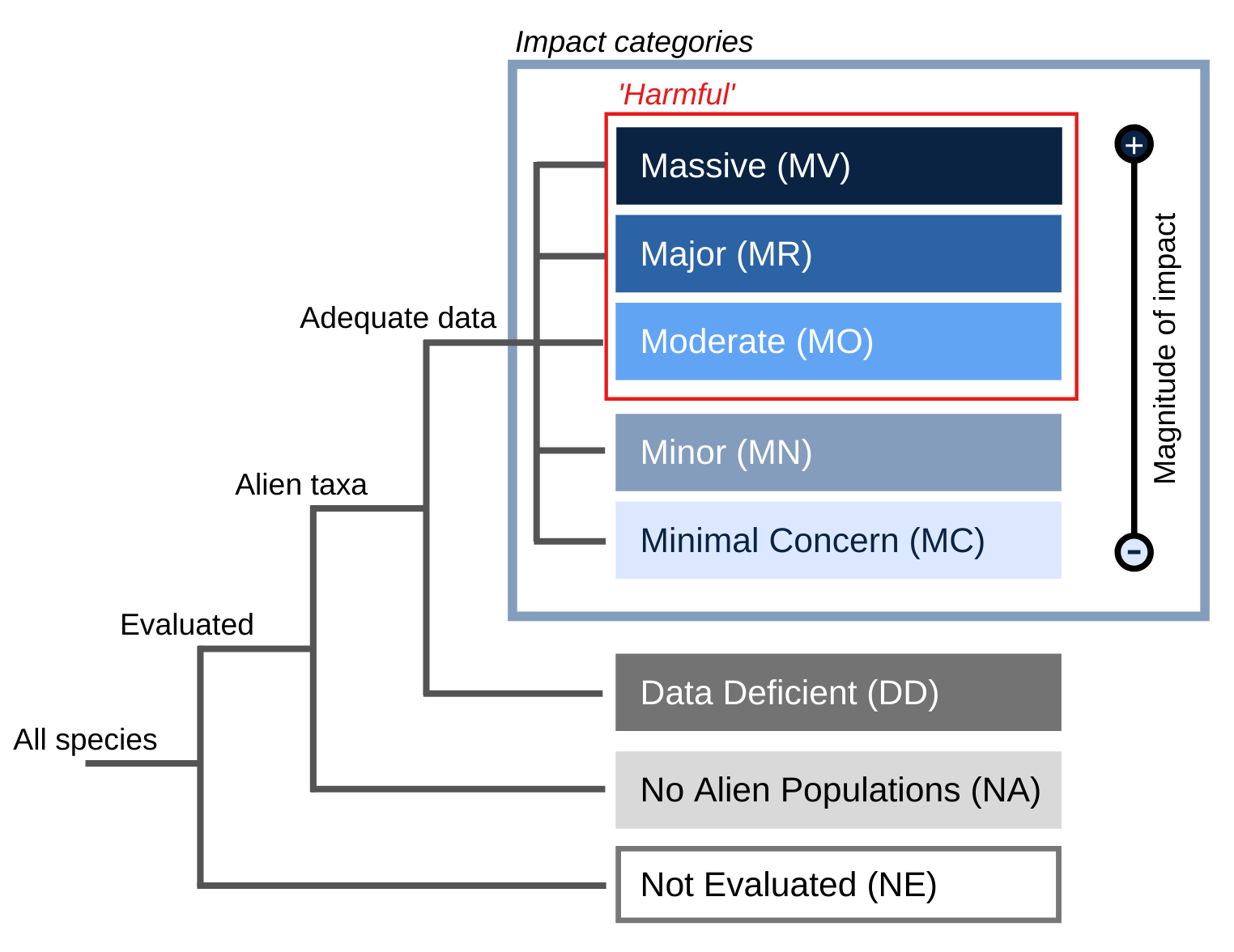- General
- Distribution
- Impact
- Management
- Bibliography
- Contact


Principal source:
Compiler: IUCN/SSC Invasive Species Specialist Group (ISSG)
Review:
Publication date: 2006-07-21
Recommended citation: Global Invasive Species Database (2025) Species profile: Mimosa diplotricha. Downloaded from http://www.iucngisd.org/gisd/speciesname/Mimosa+diplotricha on 07-12-2025.
A Risk assessment of Mimosa diplotricha for Australia was prepared by Rod Randall. The result is a score of 16 and a recommendation of: reject the plant for import (Australia) or species likely to be a pest (Pacific) (PIER, 2008).
In Australia the best management approach to controlling M. diplotricha has been suggested to encompass a variety of different methods, including herbicide use and biological control (DPIF, 2007).
Physical: Hand control is difficult due to spines. Plants can be slashed before seeding occurs. Slashing in pastures and other non-crop situations on a regular basis to prevent seeding provides effective control (DPIF, 2007).
Chemical: Any herbicide that is applied should be done so before seeding occurs. The weed is not susceptible to soil fumigants and short-term residual herbicides, (although it may be temporarily controlled with atrazine, diuron and hexazinone at standard to high rates). It is susceptible to translocated herbicides including sodium arsenite, 2,4-D plus atrazine, fluroxypyr and probably glyphosate at standard rates. In non-grazed infested areas 4.5 mL Starane 200 per litre of water can be used (DPIF, 2007). More details of herbicide application may be found at DPIF, 2007.
Biological: An introduced sap feeding bug, the psyllid Heteropsylla spinulosa has been released as a biocontrol agent for M. diplotricha in north Queensland, Austalia, in non-crop areas. Releases at Palikir, Pohnpei have also proven effective. (DPIF, 2007, Waterhouse 1994, in PIER 2008). In Australia it is recommended that pastures and non-crop infestations are assessed for insect abundance between November-April. (The effectiveness of insect control can be predicted by abundant insects prior to flowering commencing in early April). If insects are present in sufficient numbers, the growing tips and leaves are curled and stunted, resulting in no or minimal flower production. Slashing or herbicides should be applied if there are not sufficient numbers of insects prior to April for effective control. In pastures grazing animals tend to control this protein rich legume and prevent it dominating. Plants stunted by Heteropsylla attack are less spiny and are readily grazed by stock. An isolated strain of the stem-spot disease (Corynespora cassiicola) (indigenous to Australia) also appears specific to giant sensitive plant. One study noted that the citheroniid moth (Psigida walker) caused a significant extent of defoliation and the subsequent prevention of seeding of M. diplotricha in Brazil (Vitellia et al., 2001). However, it was shown that the citheroniid moth lacked the target specificity required as it attacked several native bipinnate Acacia species, thus was deemed unsuitable for release (Vitellia et al., 2001).









